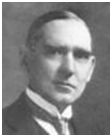Moreover, Pfeiffer found that successive dilutions of a substance, each time in the ratio of 1 to 10, caused a change in the crystallization pattern up to the 30th such dilution. Beyond this he did not go; but the highest dilution still gave an effect. It is interesting to note that no molecules of the original substance could have persisted beyond the 18th or 20th dilution.
Thus Pfeiffer confirmed the intuitions of Korsakoff and Fincke that the effect of a potentized drug is transmitted from one vial or vehicle to the next long after the drug molecules have disappeared. The ability of a high, ultra-molecular potency to produce a change in crystallization should settle for all time the acrimonious disputes between those who have known that high potencies contain the qualities of the original drug (not necessarily the original molecules) and those who did not believe it.
CONCLUSION.
Here are four approaches to reality. Had he known of them, Lippe could have made his prescription of Lac can. with whichever he chose to use. There was an objective relation between the drug and the impotent patient. Any approach to reality should have indicated the relation. Lippe solved the problem by a study of the symptoms. He might have observed the autonomic responses. He might have worked out the case on Boyds emanometer. Or he might have determined the remedy from Pfeiffers crystallization.
Thus all these approaches converge to a common centre. Each represents a separate ideology until they are viewed together. Then they fuse perfectly, and a new structure emerges, each part separated yet all uniting into a perfect whole. Examine this structure and you will observe that wherever there is a gap in one part it acts as a mortice into which fits a tenon from its adjacent part, just as the parts in a frame building fit together. Through them are explained the two main aspects of homoeopathy: on the one hand, drug potentization as elucidated by Pfeiffers crystallization work and, on the other hand, the rationalization of symptoms by relating them to the autonomic mechanism.

